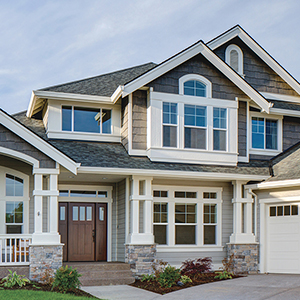When shopping for replacement windows, one thing to keep in mind is the installation method the window contractor will use. Knowing this is the only way to get a true apples-to- apples comparison of potential installers. Too many times when I meet with homeowners looking for replacement windows, I find out they do not thoroughly understand what window installation method is going to be used. The sale person did a great job of explaining the features of their windows, but when I ask what type of installation method they are using they look at me with deer in the headlights look. When replacing windows, there are really two types of methods used almost all of the time.
The first method which I will call “full-frame replacement” involves removing the entire old window unit. This process creates a higher labor cost due to the extra steps involved. When replacing windows using a full-frame replacement, the window contractor will remove the interior and exterior trim. The interior trim is called the casing and is the trim you see attached to the window frame and the interior wall. Depending on the condition, the casing may need to be completely replaced with new casing or it may be able to be reinstalled. The exterior trim is usually what is called brick mold. This piece covers the nailing fin of the old window unit. Again depending on condition it may need replaced or reinstalled. In some cases the siding is installed right to the window frame so the window replacement contractor may need to cut back siding to reach the nailing fin of the old unit to completely remove and properly install the new replacement windows.
In a full-frame replacement the window contractor will then use a nailing fin to install unit and flash the window to prevent water intrusion by using window flashing tape and then install new or reinstall exterior trim. On the inside they may need to add jamb extension depending on the depth of the walls and what type of window is being installed. Since vinyl windows are typically thinner frames the addition of a jamb extension is almost always a must. Most wood products require a full frame replacement, but the wood market has changed some so there are models that can be installed by the second method.
The second type of window replacement I will call and “insert installation”. This is most common in the vinyl or fiberglass window market. This process is less labor intensive and less intrusive for the home owner. An insert installation starts with the removal of the sashes. Simply put sashes are the pieces with the glass in them and are usually the operating portions of the window. Also at this time the hardware for the windows is removed. Unlike the full frame replacement option there is not a need to remove the interior or exterior trim. But in many cases there may be some rotten wood in the exterior trim or sills that will be addressed by a reputable window installer.
Then instead of using the rough opening for the old window the new replacement window is measured to fit the opening created by the frame of the old window. Upon installation there will need to be a new piece of trim added to interior called a “stop”. Then typically the exterior gets wrapped with an aluminum trim as a finishing detail.
In shopping for windows ask the window installation contractor what the options are and what would be best for your specific situation.

